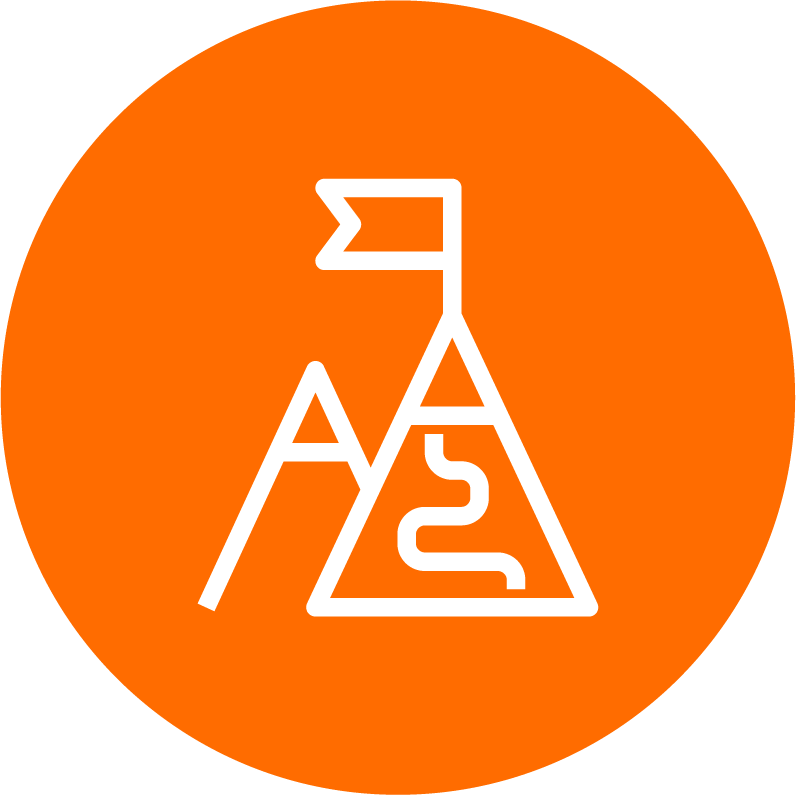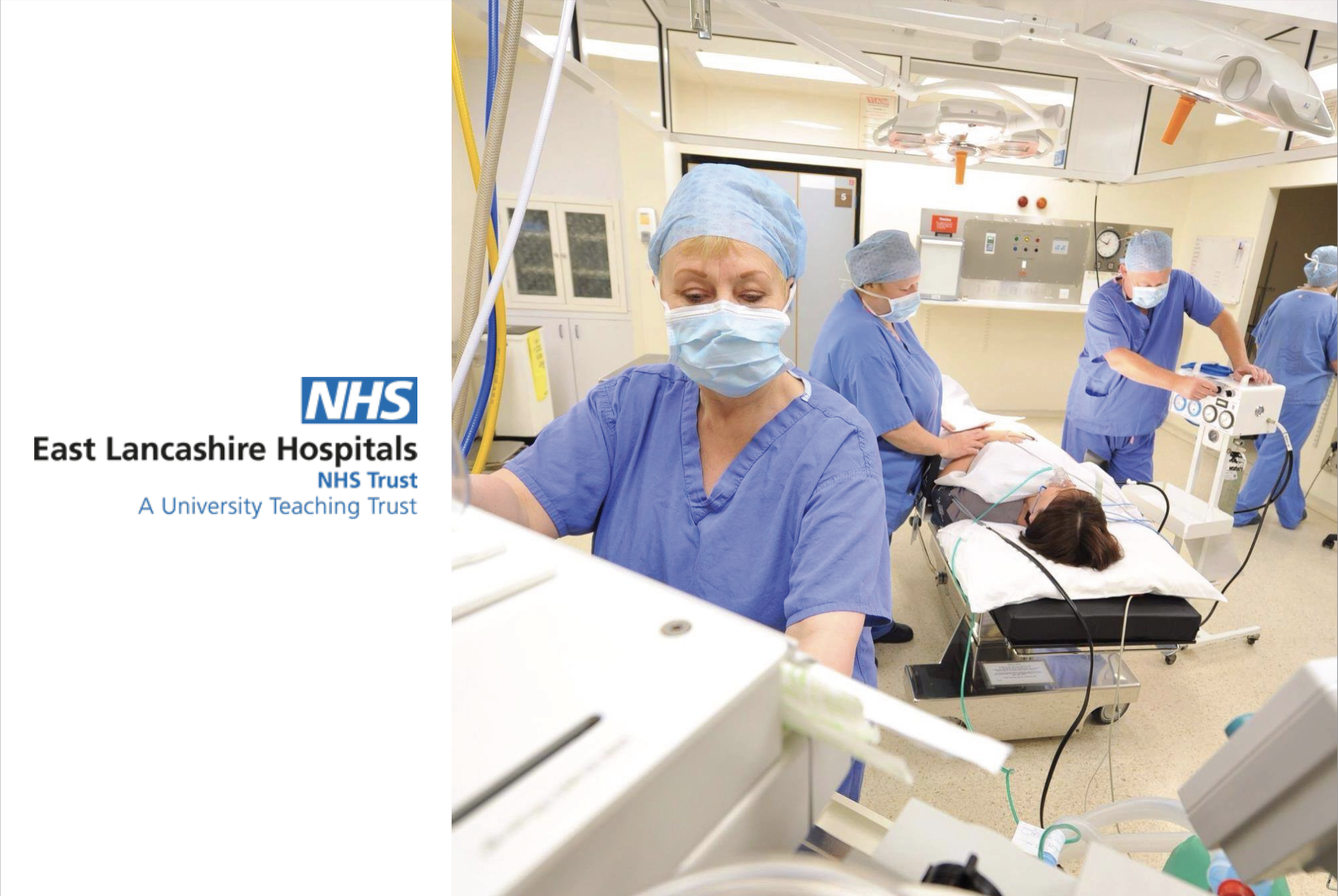Case Study
East Lancashire Hospitals NHS Trust Leverages TriNetX to Automate Research Capabilities and Optimize Clinical Trial Patient Recruitment

Organization
East Lancashire Hospital NHS Trust was established in 2003 and services over 700,000 patients across five hospitals and various community sites. ELHT provides specialty services in hepatobiliary, head and neck, urological cancer, cardiology, and level 3 neonatal intensive care.

Challenges
- Improve research capabilities by minimizing manual processes
- Gain more accurate patients counts for protocols
- Attract more research opportunities
- Enhance study performance

Solution
ELHT partnered with TriNetX
and leverages the power of TriNetX LIVE Research platform.

Results
- Streamlined and automated research systems and processes for clinical
trial operations - Enhanced research capabilities
- Achieved credibility with sponsors with patient enrollment estimates
backed by data - Accelerated doubling of research team
East Lancashire Hospitals NHS Trust (ELHT) is a large, integrated healthcare organization providing high quality acute secondary healthcare for more than 700,000 people of East Lancashire and Blackburn annually. They are committed to delivering the best possible healthcare services for the benefit of their patients, by continually improving the productivity and efficiency of their services.
ELHT wanted to increase their commercial clinical trial portfolio and to leverage their local data for feasibility and patient recruitment. They decided to partner with TriNetX to automate and enhance their research capabilities to optimize their access to clinical trials.
Struggling with manual research processes
“Our systems and processes were disjoined and very manual,” said Mark Dawson, Research and Innovation Operations Manager at ELHT. “We were relying predominantly on the medical and clinical staff and their experience. They might look at a research protocol and intuitively estimate the number of people coming in with a particular condition without being able to develop the very specifics and intricate criterion for the research project.”
This created problems for ELHT when responding to potential clinical trial opportunities, as estimates oftentimes did not reflect the accurate number of patients eligible for trials. ELHT also wrestled with the time-consuming manual process of combing through clinical lists, and patient records to uncover actual numbers of potential candidates.
“The entire process required a lot of communication and discussion,” Dawson continued. The organization was able to receive protocols from long-term sponsors who trusted ELHT, but it was difficult to expand into other disease areas or sponsor investigators with whom the organization hadn’t yet developed a relationship.
This made attracting additional clinical trial opportunities difficult. They needed a way to streamline their systems to better leverage their data and gain more visibility and credibility with pharmaceutical and CRO sponsors.
Their goals for a solution included:
-
Improve its research capabilities
-
Identify accurate patient counts for protocols backed by data
-
Attract more research opportunities to its patients
-
Enhance its overall study performance for sponsors
ELHT finds the answer with TriNetX
ELHT became aware of the TriNetX platform from an introduction via the Greater Manchester NIHR Clinical Research Network and was intrigued by the potential benefits the TriNetX platform could offer.
“We felt TriNetX could provide accurate knowledge of patient numbers and profiles per specialty rather than having to rely on our various systems that were often not exact,” said Michelle Stephens, Head of Research and Innovation at ELHT.
“We expected it to be a significant step change for the Trust and would enhance our competitiveness for funding, benchmarking our performance with other NHS sites, and for advancing translational research efforts.”
Key factors that made the adoption of TriNetX appealing to ELHT included:
-
Patient identifiable data does not leave the Trust since the TriNetX appliance is physically hosted within ELHT’s data center.
-
Use of the TriNetX platform provided a way to eliminate reliance on experience and guesswork for case note reviews and assessment of clinical lists for protocol feasibility.
TriNetX provided a Project Manager who worked closely with the ELHT team at every step and coordinated resources to bring data to the TriNetX platform.
The implementation involved:
-
Installation and configuration of the TriNetX appliance into the ELHT data center.
-
Network configuration, ensuring the appliance can communicate.
-
Data curation – extract data from disparate sources at ELHT, link and de-identify the data and transfer it to the TriNetX appliance.
-
Terminology mapping – the TriNetX team mapped the local coding catalogue to platform standard terminologies.
-
Ingestion of the ELHT data into the TriNetX appliance – resulting in being able to query it on the platform.
As part of the implementation, TriNetX provided clinical training to approximately 40 research staff including research nurses, study coordinators, and research team leads. Ongoing communication via frequent meetings, looking at usage metrics, and discussions for issues that need resolution were key to the success of the integration.
TriNetX streamlines ELHT research capabilities
With the implementation of TriNetX, ELHT was able to accelerate its research department expansion, doubling its size in two years.
“More research nurses mean more research projects for the benefit of our patients,” said Dawson. “We had already planned the team expansion but TriNetX has enabled us to make it happen even faster. If we were going through the previous manual process to get projects in the pipeline, it would have taken much longer to achieve that growth. TriNetX has helped us show the appeal of our Trust and that expanded framework has gotten more projects coming through sooner.”
The automation and simplification of ELHT’s research capabilities has also helped accelerate the query process and response time to sponsors.
“When designing studies, it’s useful to know how many eligible recruits we could get from our site so we can estimate how many sites we might need,” said Sarah Ashton, Clinical Research Development Lead at ELHT. “TriNetX obviously enables us to do that. Building relevant queries ourselves means we don’t have to go backwards and forwards with coding and experiencing the delays that go with that.”
Since TriNetX has been implemented, ELHT has increased its exposure to sponsor trials. Since 2021, 50+ commercial clinical trial opportunities have been sent to ELHT via TriNetX, the majority based on data-driven patient estimates from a range of life science organizations.
“The TriNetX platform has provided us a lot of efficiency savings as a site,” said Dawson. “The manual work of getting into the nitty gritty of an inclusion/exclusion criteria for a protocol really slows things down. TriNetX has trimmed that time down and made things much more refined. The way we can connect with other sites has been appealing.
“TriNetX also improves our credibility,” Dawson continued. “Let’s say we’re working with a new medic in a hospital on a new disease area. If we say we can get so many people for a study we can now back that up with data, thanks to TriNetX.
ELHT pleased with the TriNetX relationship
“We are very happy with the relationship we have with TriNetX,” Dawson summed up. “I’ve been approached to look at another comparative system and there’s no interest on our part to switch.
Our relationship with TriNetX is friendly and personalized,” he said. “With some companies, it’s like you’ve purchased a product, but the customer care and support isn’t present. You can be sending off an email to an unknown person and waiting for a response. It’s not like that with TriNetX.
“If we contact [TriNetX], we get a quick response. We have frequent meetings to discuss data analysis and utilization. It’s very open and honest. We want to use the system to the fullest and they want us to as well. It’s a win-win that way. We like the relationship we’ve got with TriNetX and we’re very happy how it’s working.”
About East Lancashire Hospitals NHS Trust
East Lancashire Hospitals NHS Trust (ELHT) was established in 2003 and is a large integrated health care organization providing high quality acute secondary healthcare for the people of East Lancashire and Blackburn with Darwen. ELHT employs 8,000 staff, some of whom are award winning and internationally renowned for their work and achievements. Over 700,000 patients a year are treated at ELHT, from the most serious of emergencies to planned operations and procedures. Their high quality healthcare services are offered across five hospital sites and various community sites. ELHT has a total of 1,041 beds, provides a full range of acute hospital and adult community services and are a specialist center for hepatobiliary, head and neck, and urological cancer services. ELHT also provides specialist cardiology services and Level 3 Neonatal Intensive Care.
For more information, please visit https://elht.nhs.uk/
photo source: East Lancashire Hospitals NHS Trust Facebook Page

